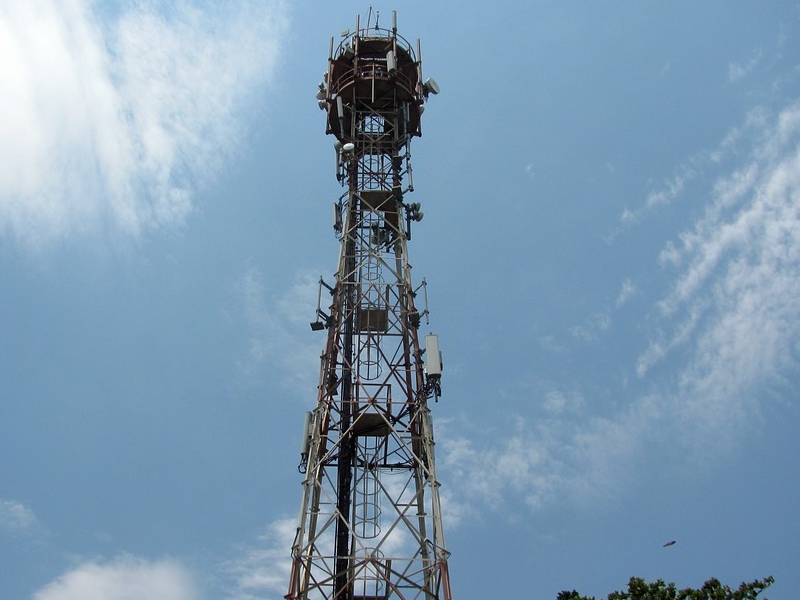- Home
- Telecom
- Telecom Features
- The History of Telecom Spectrum in India: The 900MHz Auctions
The History of Telecom Spectrum in India: The 900MHz Auctions

Spectrum is the life-blood of a telecom operator - it's literally a range of electromagnetic waves, and when we talk about telecom spectrum, we're talking about the frequencies that are used to transmit sound and data across the country to our phones. Every telecom operator has been assigned certain portions of spectrum to use in India, through auctions and administrative allocations. Essentially, you have spectrum "bands", and frequencies around a particular band are then auctioned off.
(Also see: Tech 101: What Is Spectrum, and Why Is It Being Auctioned?)
The allotment of spectrum is either paired or unpaired. In case of paired spectrum, different sets of frequencies are allocated for uplink and downlink. For example in case of 900MHz spectrum, the DoT allocated frequencies between 890MHz - 915Mhz for uplink, and between 935MHz - 960Mhz for downlink in each circle. Uplink and downlink just refer to data (or voice, or any other signal) sent from you to the telco, and from the telco to you respectively. The telcos have to separate the two to manage the spectrum effectively.
So for example let's say an operator has won 5MHz of paired spectrum in 900MHz spectrum. Then, the operator might be allocated 890MHz - 894MHz for uplink and 935MHz - 939MHz for downlink. The other type of spectrum is unpaired spectrum. In this the operator is allocated a particular set of continuous frequencies for uplink and downlink. For example in the case of the 2300MHz band, DoT allocated 2305MHz - 2325MHz. It is one continuous block of spectrum that can be divided for uplink and downlink purposes as per the needs of the operator.
The result is a fairly complex web of arrangements that have been steadily coming into place over the last few decades. We're now seeing fresh auctions to portion out even more frequency for 4G connectivity, but to really understand how that works, you need to know how the various bands got shared out over the years. Here's a detailed look at the 900MHz band.
One of the first bands of telecom spectrum that was auctioned off, the 900MHz frequency band was used to deploy 2G networks in India in the 90s, and continues to be used today, as operators now look to using it for 3G services. As we've explained before, It's also obviously more energy efficient than higher frequency bands; the higher the frequency, the lower the wavelength, and thus the more energy that's required to cover the same distance.
1994 and 1995: Telecom licenses were allocated by the Department of Telecommunication though auctions, and "beauty contest". The country was divided into 23 circles (later, in 2007, Chennai and Tamil Nadu were merged leaving 22 circles) and the DoT awarded licenses to two operators per circle.
In Delhi, Mumbai, Chennai, and Kolkata, the DoT followed a "beauty contest", where criteria such as financial resources, reliability, and investment in research were outlined, along with specific details such as rate of network rollout, pricing, quality, and competitiveness. The companies that most closely matched these criteria were allocated the licenses in 1994.
In other circles, potential service providers had to team up with a foreign company to be eligible to bid. Indian companies, it was assumed, would not have the financial capability and technical know-how to provide cellular telephone services at a large scale. The spectrum was then auctioned and allocated in 1995.
In 1995 the Government auctioned two blocks of 4.4MHz from the 900MHz band for GSM-based mobile services in non-metro circles. But the auction model showed some problems - multiple licenses were awarded to a single company, Koshika Telecom, under the brand name Usha Fone, which raised concerns as its annual turnover was $60 million (then roughly Rs. 228 crore) whereas the estimated license fee was $15 billion (then roughly Rs. 57,000 crore) - 250 times higher than the turnover. Another concern here was of a possible monopoly, and as a result, the rules were changed and a company could choose to be active in only 3 circles, leading to re-bidding for the band.
1997 and 2000: The next time allocation of 900MHz spectrum took place, the government was entering the telecommunications field. In Mumbai and Delhi, MTNL was allocated 4.4MHz of the spectrum in 1997 to start basic GSM services. With the creation of BSNL in 2000, the government increased its coverage nationwide.
2004: After the 2001 auction of the 1800MHz band, which we will cover in our next article, the government decided auctions were not suitable for the allocation of spectrum, and switched to an administrative allocation model.
The final batch of 900MHz allocation was done in 2004, through this model. It resulted in spectrum being allocated at much lower prices than before - for example, in West Bengal, Reliance paid Rs. 12.25 crore for 4.4MHz in 1995, but Bharti paid only Rs. 1 crore for the same amount of spectrum in 2004. In Orissa, Reliance paid Rs. 58.49 crore in 1995, while Bharti paid Rs. 4.4 for the same amount of spectrum in 2004.
Final spectrum allocation: Between 1995 and 2005's auctions and allocation, only 4.4MHz of the 900MHz spectrum was allocated in the different circles, very little compared to international standards. Further allocation would take place on the basis of subscriber count, for a "spectrum usage chart".
In 2013, spectrum in the 900MHz band was put up for auction in Mumbai, Delhi, and Kolkata but none of the spectrum got sold. The licenses allocated in 1995 were about to expire, and so a fresh auction was held in the metros in 2014. Then, Loop lost its license in Mumbai to Airtel, Idea gained 5MHz of spectrum in Delhi, while Airtel and Vodafone had to lower their holdings. This spectrum could be used to deploy 3G, which is what Idea did in Delhi, and Airtel and Vodafone did in Mumbai. In 2015, spectrum in several non-metro circles were expiring and was put up for auction as well, and Airtel, Vodafone, and Idea managed to gain additional spectrum and increase their holdings, while Reliance lost the most ground.
Chart does not include Dishnet Wireless (a subsidiary of Aircel) which holds 4.4MHz of 900MHz spectrum in Jammu and Kashmir, Assam, and North East.
More in our telecom spectrum auction series
For the latest tech news and reviews, follow Gadgets 360 on X, Facebook, WhatsApp, Threads and Google News. For the latest videos on gadgets and tech, subscribe to our YouTube channel. If you want to know everything about top influencers, follow our in-house Who'sThat360 on Instagram and YouTube.
Related Stories
- Samsung Galaxy Unpacked 2025
- ChatGPT
- Redmi Note 14 Pro+
- iPhone 16
- Apple Vision Pro
- Oneplus 12
- OnePlus Nord CE 3 Lite 5G
- iPhone 13
- Xiaomi 14 Pro
- Oppo Find N3
- Tecno Spark Go (2023)
- Realme V30
- Best Phones Under 25000
- Samsung Galaxy S24 Series
- Cryptocurrency
- iQoo 12
- Samsung Galaxy S24 Ultra
- Giottus
- Samsung Galaxy Z Flip 5
- Apple 'Scary Fast'
- Housefull 5
- GoPro Hero 12 Black Review
- Invincible Season 2
- JioGlass
- HD Ready TV
- Laptop Under 50000
- Smartwatch Under 10000
- Latest Mobile Phones
- Compare Phones
- OnePlus 13T
- Honor 400 Lite
- Honor Play 60m
- Honor Play 60
- Poco C71
- Lava Bold 5G
- Huawei Pura X
- Motorola Edge 60 Fusion
- Asus Vivobook 16 (AMD, 2025)
- Asus Zenbook S16 (AMD, 2025)
- Samsung Galaxy Tab S10 FE+
- Samsung Galaxy Tab S10 FE
- Huawei Watch Fit 3
- Garmin Instinct 3
- Haier M80F Mini LED 4K
- Haier M95E
- Nintendo Switch 2
- Sony PlayStation 5 Pro
- Whirlpool 1.5 Ton 3 Star Inverter Split AC (SAI18K38DC0)
- Whirlpool 1.5 Ton 5 Star Inverter Split AC (SAI17B54SED0)















